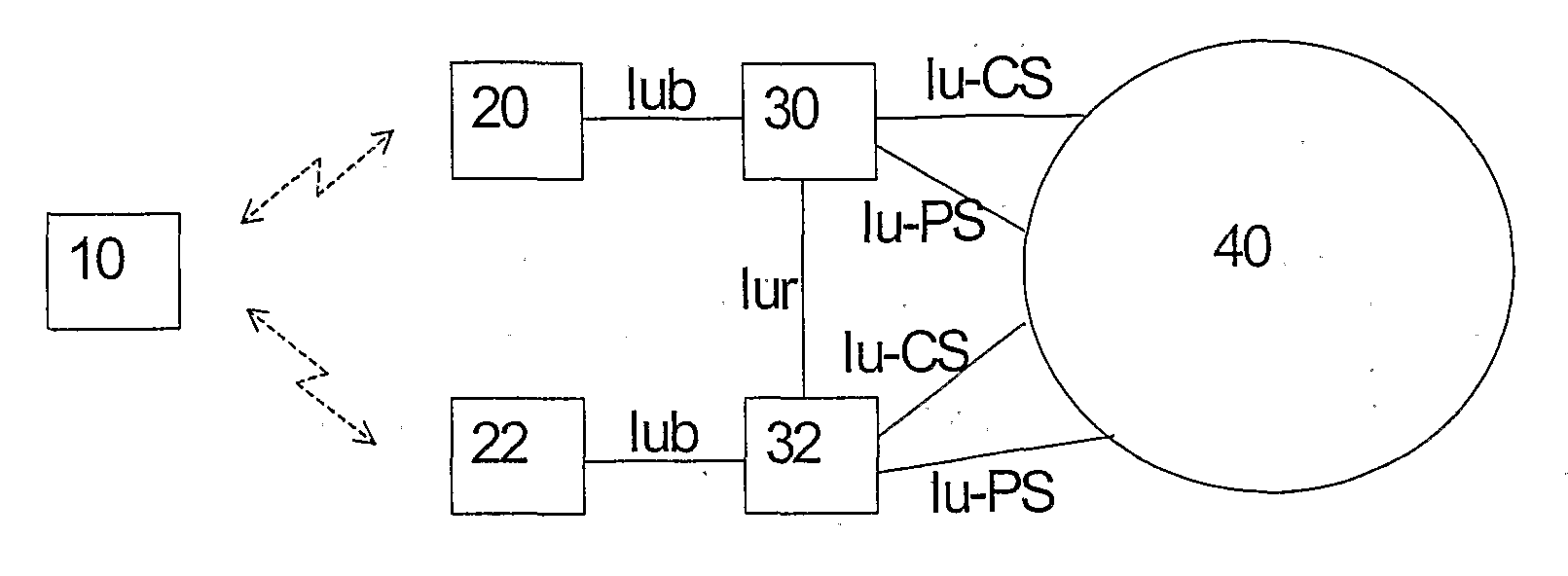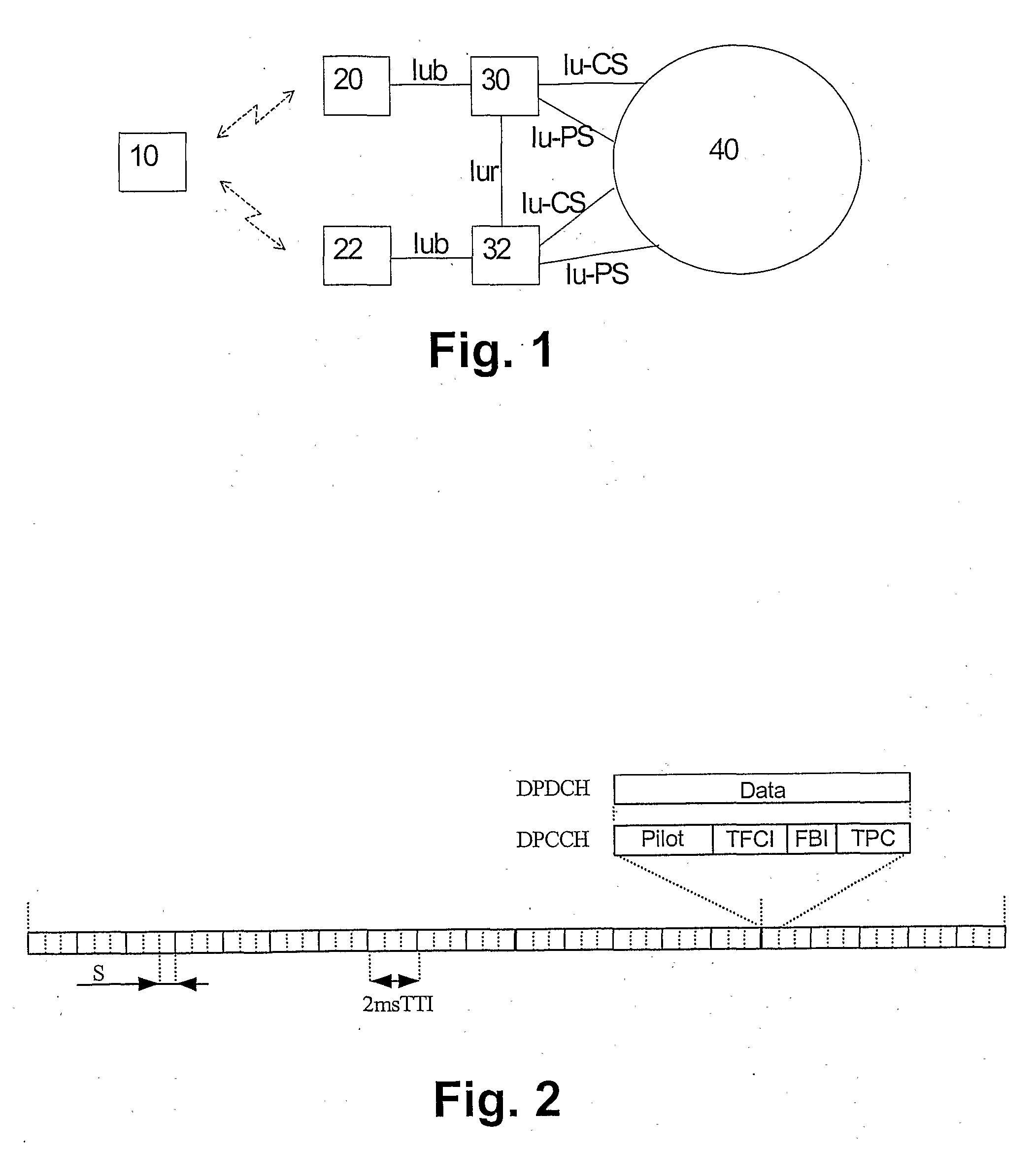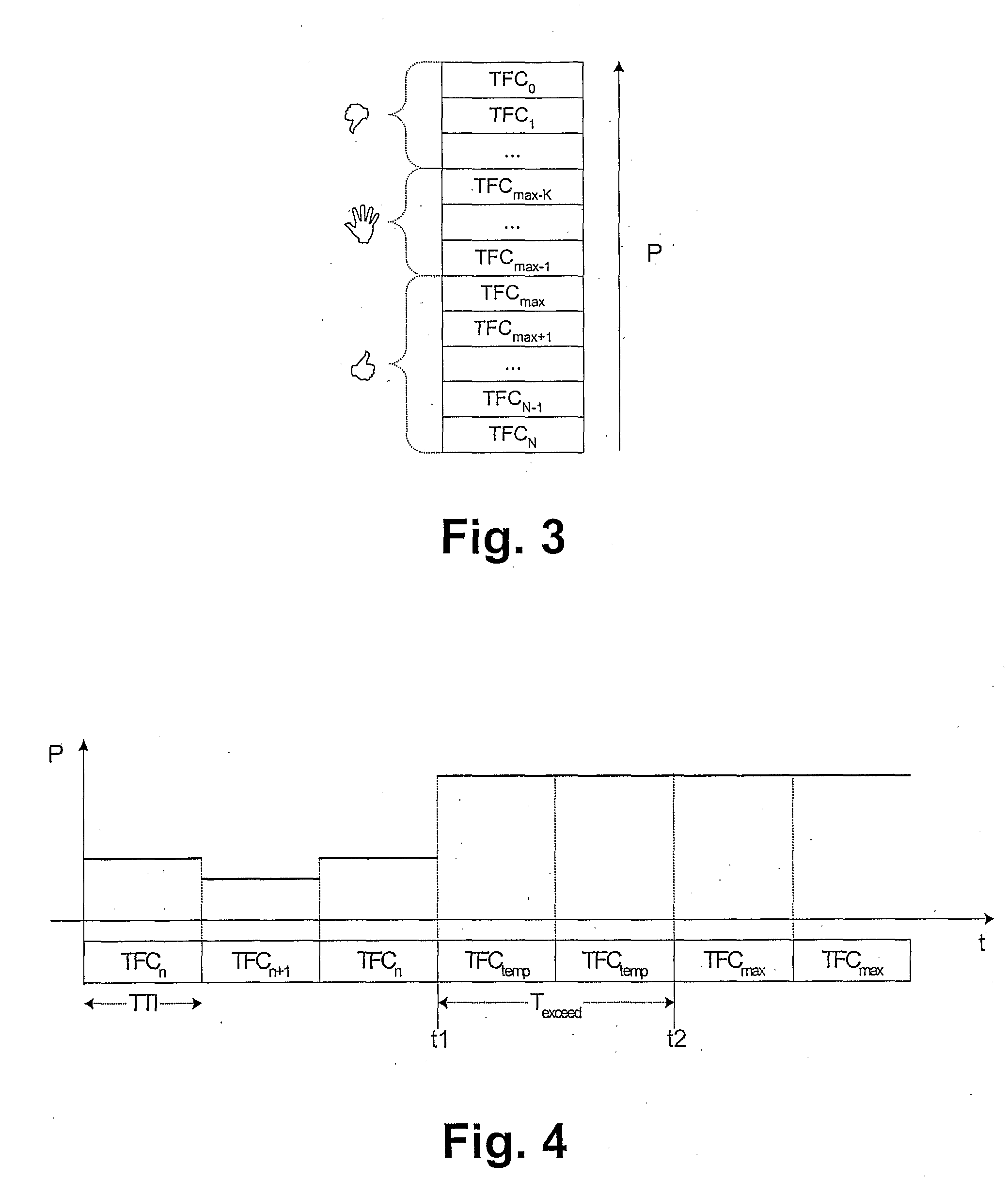Scheduling with hidden rate request
a scheduling device and hidden rate technology, applied in the field of scheduling devices and scheduling data transmission, can solve the problems of limited adaptability, inability to guarantee identical throughput to each user, and achieve spectral inefficiency for high allocated data rate and long release timer values
- Summary
- Abstract
- Description
- Claims
- Application Information
AI Technical Summary
Benefits of technology
Problems solved by technology
Method used
Image
Examples
Embodiment Construction
[0035] The preferred embodiment will now be described on the basis of a 3rd generation Wideband CDMA (WCDMA) radio access network architecture as shown in FIG. 1.
[0036] 3rd generation mobile systems like UMTS are designed to provide a wide range of services and applications to the mobile user. The support of higher user bit rates is most likely the best known feature of UMTS. Furthermore, provisioning of appropriate quality of service (QoS) will be one of the key success factors for UMTS. A mobile user gets access to UMTS through the WCDMA-based UTRAN. A base station or Node B 20, 22 terminates the L1 air interface and forwards the uplink traffic from a UE 10 to an RNC 30, 32. The RNCs 30, 32 are responsible for radio resource management (RRM) and control all radio resources within their part of the UTRAN. The RNCs 30, 32 are the key interface partners for the UE10 and constitute the interface entity towards a core network 40, e.g. via a UMTS Mobile Switching Center or a Serving GP...
PUM
 Login to View More
Login to View More Abstract
Description
Claims
Application Information
 Login to View More
Login to View More - R&D
- Intellectual Property
- Life Sciences
- Materials
- Tech Scout
- Unparalleled Data Quality
- Higher Quality Content
- 60% Fewer Hallucinations
Browse by: Latest US Patents, China's latest patents, Technical Efficacy Thesaurus, Application Domain, Technology Topic, Popular Technical Reports.
© 2025 PatSnap. All rights reserved.Legal|Privacy policy|Modern Slavery Act Transparency Statement|Sitemap|About US| Contact US: help@patsnap.com



